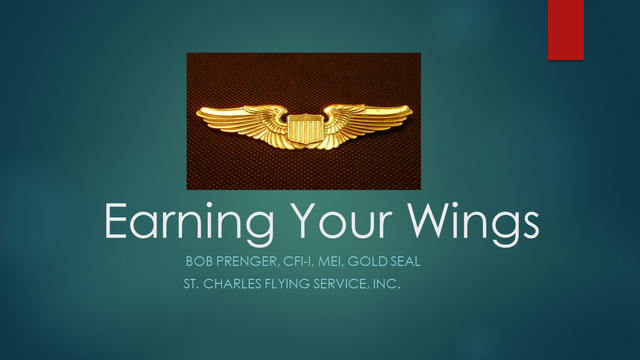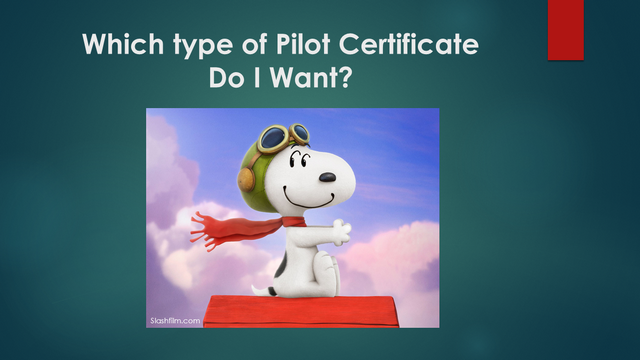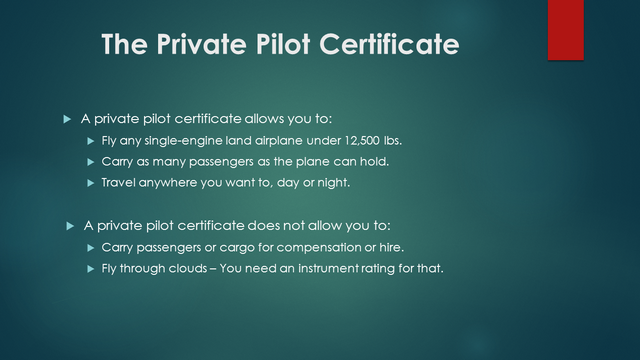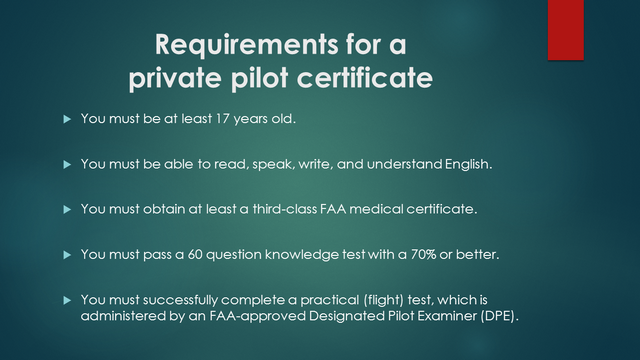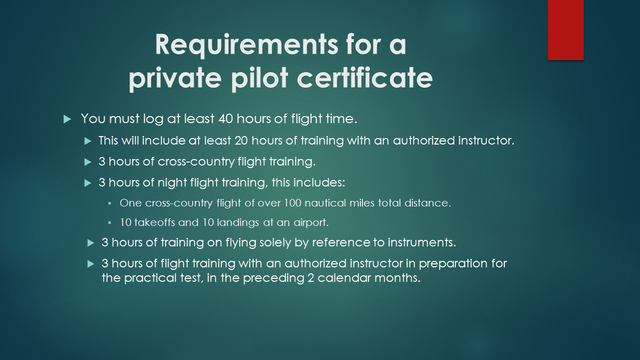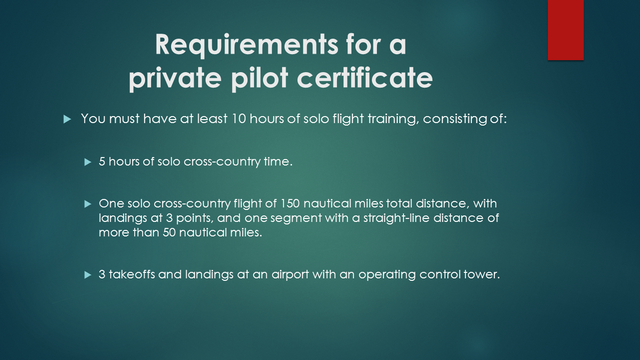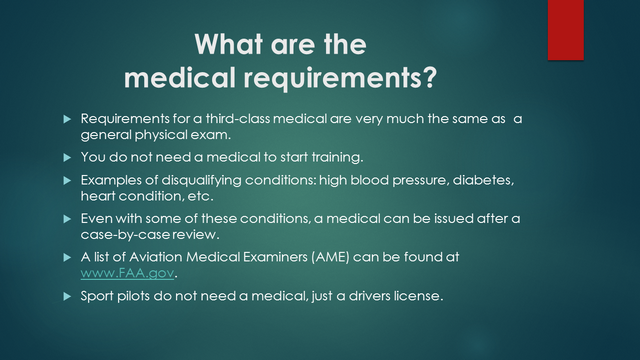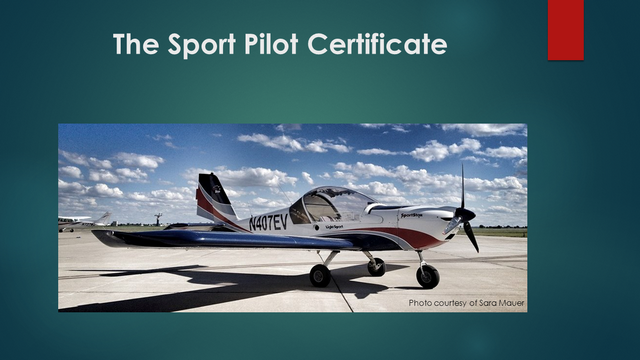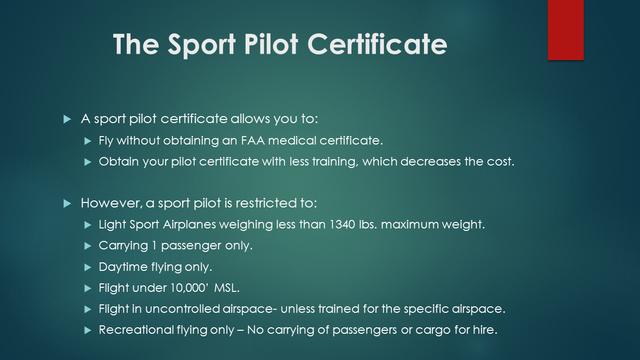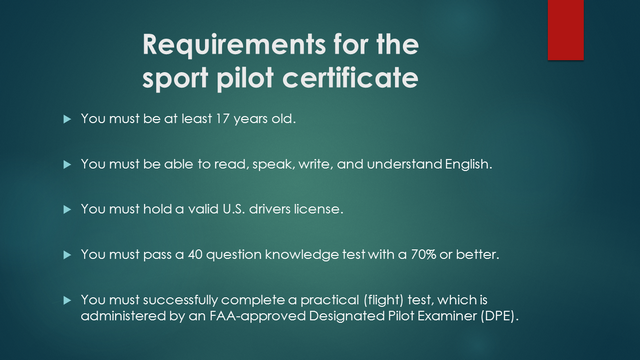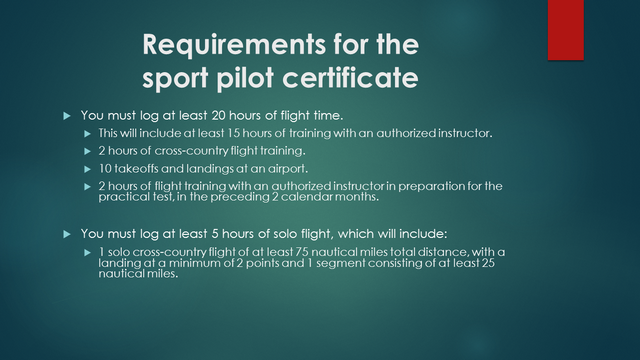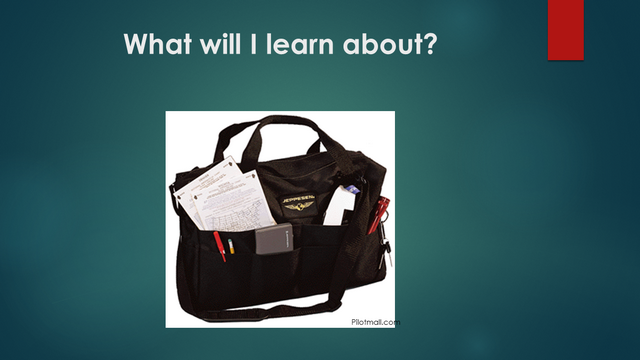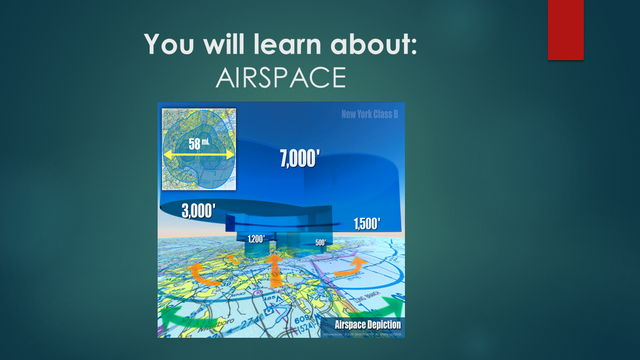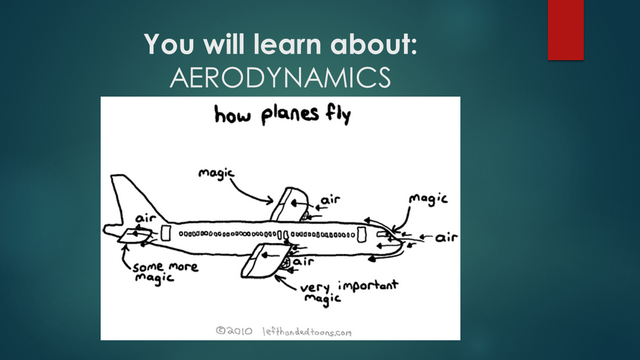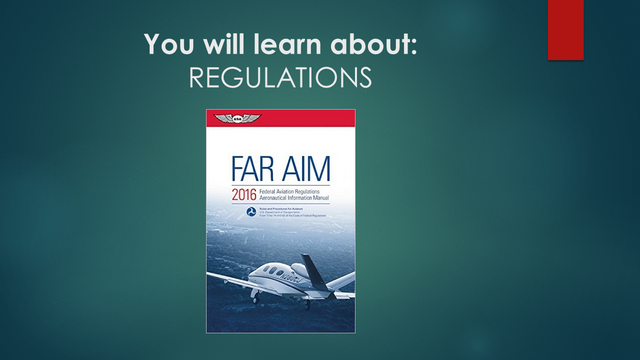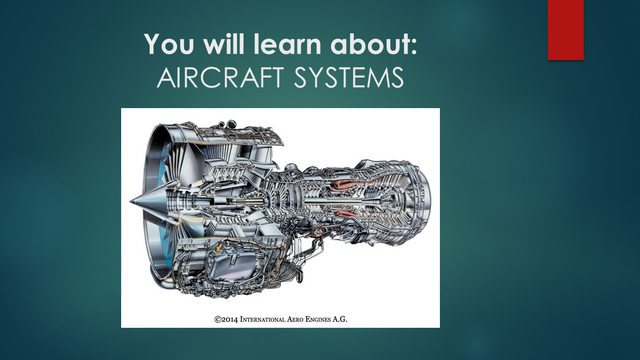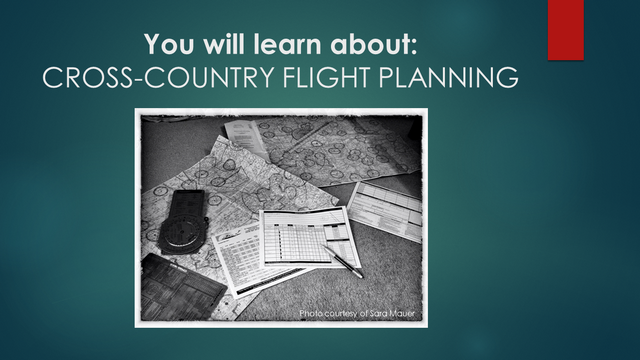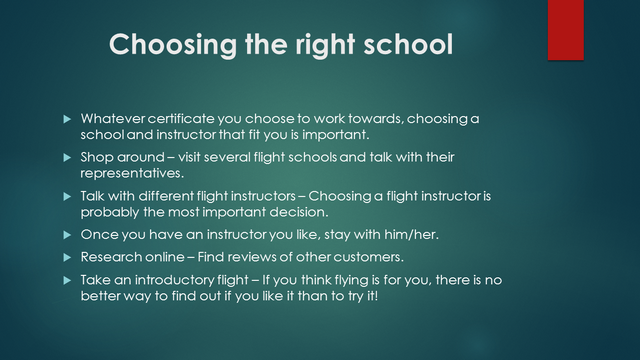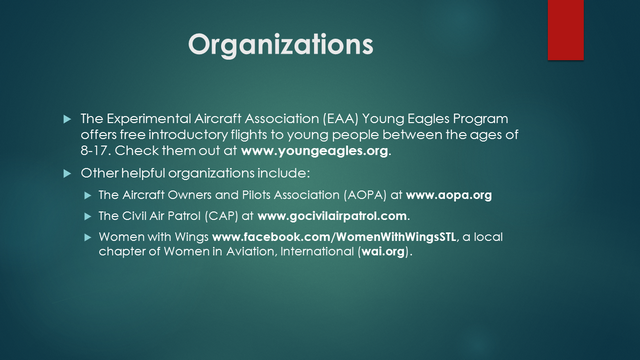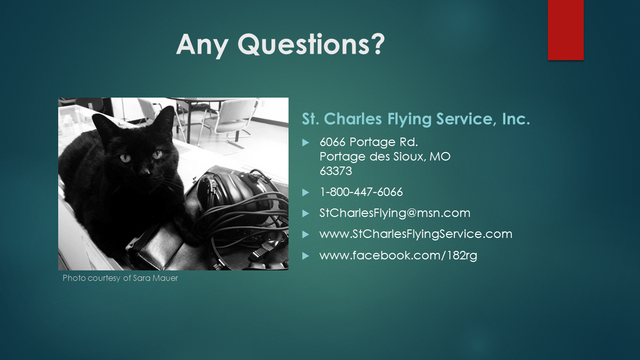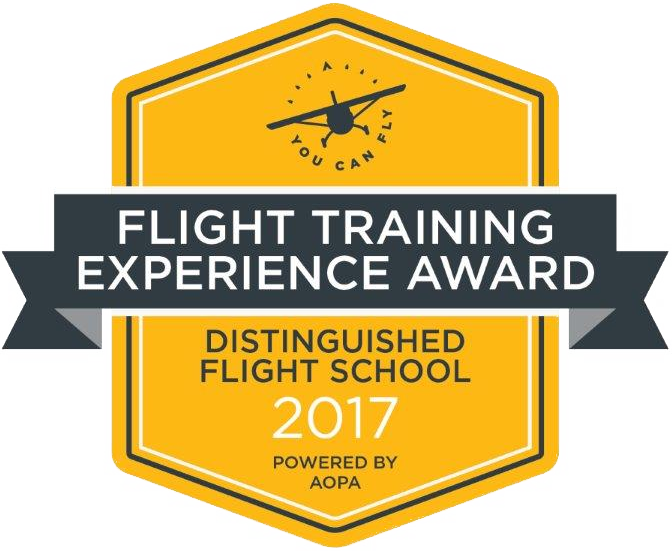FAQ’s
Want the 30,000 ft overview? Start with this short presentation delivered by Bob Prenger at the 2016 Spirit of St. Louis Air Show.
Still have questions? Dig deeper in these FAQ’s
Here are some of the most common questions regarding flight training including costs, requirements, etc. If you have a question or concern not addressed here, please contact us at 636-946-6066 or via e-mail and we’ll contact you right away…
- How do I get started?
- How much will it cost?
- Are there different types of certificates?
- What certificate is right for me?
- How safe is it?
- What are the medical requirements?
- What kinds of airplanes will I fly?
- How long does it take to learn to fly?
- How long does a lesson last?
- What is ground school?
- When will I actually begin flying?
- Where can I fly?
- Can I carry passengers?
- Do I need special insurance?
- Once I get my pilot certificate, what can I do with it?
How do I get started?
The best way to learn more about flying, flight training, etc. is to visit the airport and discuss it directly with our staff of professional, courteous instructors. Better yet, schedule an Introductory Flight: you’ll get to see what it’s all about and discuss all the details with your instructor. There are also many online sources for the prospective pilot to learn about learning to fly. Here are a few good sources:
- AOPA’s Let’s Go Flying website
- EAA’s Learning to Fly website
- The FAA’s Student Pilot Guide
How much will it cost?
Our prepaid packages are based on the FAA minimum requirements and provide a discounted rate; however, most people, depending on frequency of lessons, etc. require more than the minimums to complete their training. Typically, the actual cost for obtaining a Sport Certificate ranges from $9-10K and a Private Pilot Certificate ranges between $12-14K.
Are there different types of certificates?
Yes. In aviation, pilots receive certificates and ratings rather than “licenses”. Ratings (seaplane, glider, multi-engine, and instrument) may be added to various certificates as pilots choose their aviation paths.
The most common ways to get into flying are as follows:
Sport – Light Sport Flying is the newest addition to the list of choices for would-be aviators. Utilizing lighter, simpler Light Sport Aircraft, you can get your Light Sport Certificate in as little as 20 hrs. of flight time. This is perfect for those who want to have fun and get into flying sooner and for less money. Sport Pilots need not obtain a Medical Certificate and are limited to daytime flights in good weather, etc. Click here to learn more about the Light Sport option.
Private – This certificate is the best option for pilots who wish to go to other airports around the country, fly for business, fly at night, or carry more than one passenger. Private pilots may share flight-related expenses with their passengers, but may not be compensated or paid for flying people to different destinations.
What certificate is right for me?
It all depends on why you would like to fly. If you’re interested in flying for the pure enjoyment of flight, then a Sport certificate may be a good fit. If you plan to go on to more advanced ratings, aircraft, and capabilities, then the private certificate is the best choice. Either way, your training and experience as a Sport Pilot can be used to “step-up” to become a Private Pilot in the future if you so choose.
How safe is it?
General aviation and “those little airplanes” (as some may call them) are as safe as any other mode of travel, if not safer. Pilots and passengers do not use parachutes because airplanes and helicopters do not fall from the sky when their engines stop. An aircraft without an engine – even if it’s supposed to have one – is a glider, capable of descending safely to a landing. Every student’s training covers how to fly safely and how to deal with the extremely rare actual emergencies.
What are the medical requirements?
The medical examination form also doubles as a student pilot certificate. Applicants must see an Aviation Medical Examiner (AME) – an FAA-approved doctor – for their medical exams. There are more than 6,000 AMEs in the United States, and we can direct you to one close to you. Because some people have medical conditions that may delay or prohibit the issuance of an aviation medical certificate, students are encouraged to get an examination before training begins.
The medical exam is not rigorous. It begins with filling out an FAA application and medical history form. Eyesight must be correctable to 20/40. Applicants should not have nose or throat conditions that would be aggravated by flying, must have good balance, and be able to hear a voice at a normal, conversational tone at six feet away. Applicants cannot have mental and neurological problems such as psychosis, alcoholism, or epilepsy; any unexplained loss of consciousness; any serious medical condition such as heart attack, chronic heart disease, diabetes mellitus, or other debilitating illnesses. If an applicant has had one of these conditions, it may only cause a delay because of the required investigation rather than signifying the end of the applicant’s flying career.
What kinds of airplanes will I fly?
St. Charles Flying Service uses single-engine aircraft including Cessna and Evektor . Flight schools typically use both two- and four-seat aircraft with one engine and fixed landing gear. Most training aircraft fly at around 120 mph and can stay aloft for over four hours at a time. Speed is not important during the learning stage, because students must concentrate on how to fly rather than where to go. Once students become private pilots, they may go on to fly advanced aircraft with sophisticated navigation systems, six-passenger capability, and 150-200 mph speeds.
How long does it take to learn to fly?
Learning to fly is not difficult, but it does require study and practice. The Federal Aviation Administration (FAA) requires a minimum of 40 hours of training for a Private Pilot or 20 hours for a Sport Pilot before granting a pilot license. This training is divided into training with an instructor and solo practice with observation by an instructor. Students who fly more frequently typically have better recall of previous lessons and spend less time in review.
How long does a lesson last?
Most lessons are based on a one-hour flight, but count on a minimum of two hours per session because of pre-flight and post-flight briefings. Students and instructors talk about what will be introduced or reviewed before each lesson, then cover how things went afterwards and what will be introduced in upcoming lessons.
What is ground school?
Flight training consists of two parts: ground and flight training. Ground training teaches students the principles, procedures, and regulations that are put into practice during flying lessons. One portion of the certification process consists of a computerized exam. Ground training is designed to prepare students for this test. Ground school classes are available as an audio/visual online study course with Instructor guidance, or as a Classroom Ground School offered several times throughout the year.
When will I actually begin flying?
Students begin with a lot of help from their assigned flight instructors. From the very first lesson, students will be flying the aircraft. Students fly with decreasing levels of assistance as lessons progress, leading up to that important milestone: the first solo flight. When students reach this point, their flight instructor endorses them to practice takeoffs and landings at the local airport. There is no set time limit on the first solo flight. Instructors won’t allow students to operate aircraft alone until they demonstrate proficiency in the required maneuvers. Once students complete the required curriculum, they are recommended to the FAA for evaluation of their skills. Upon successful completion of this test, a pilot certificate is issued.
Where can I fly?
Student pilots may only go to places allowed by their instructors. For instance, when student pilots begin practicing flights to other airports, their flight instructors will endorse or vouch for their students. In effect, students are flying on the credentials of their flight instructors. Private pilots may fly essentially anywhere in the world.
Can I carry passengers?
Students are not allowed to carry passengers on solo flights. A passenger may observe a flight lesson with an instructor, however, as long as the instructor consents. Once a certificate has been earned, private pilots may carry as many passengers as their aircraft are legally equipped to carry.
Do I need special insurance?
Assured Partners Aerospace carries an insurance policy that covers students, instructors, and renters. If you require additional coverage, there are several aviation insurance companies that can grant a more comprehensive plan.
Once I get my pilot certificate, what can I do with it?
Ideally, this question is answered before training begins. Flying offers a wealth of opportunities. Sightseeing flights with friends and family, visiting nearby airports, and making new friends are all possibilities. More distant airports make great destinations for vacations, business, and pleasure trips. Many pilots have learned aerobatics for fun and competition, built and flown their own aircraft, and restored antique/classic aircraft. Many have reached out-of-the-way locations by learning to fly float planes and aircraft on skis. Tailwheel airplanes can also get in and out of very small or rough landing strips. Benevolent organizations are another option. The Civil Air Patrol and US Coast Guard Auxiliary conduct search and rescue operations when called upon, and a growing number of humanitarian flight organizations provide transportation to people in need of non-critical medical treatment.

